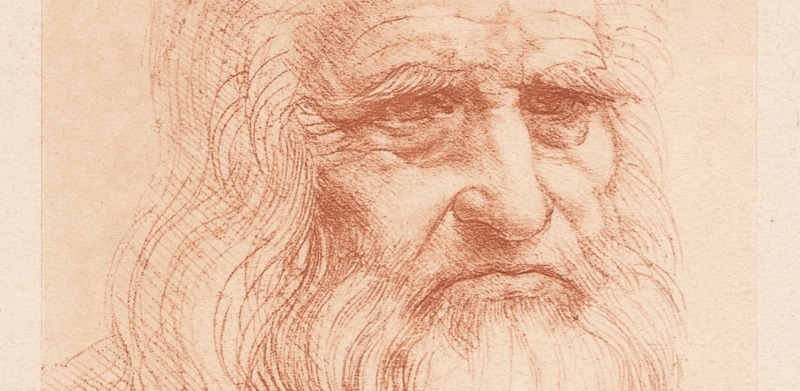When and where were contact lenses invented?

It might be hard to believe, but those small hydrogel silicone prosthetic devices we use to correct our vision and that fit on the tip of your finger are the result of centuries of research and innovation. The story of the contact lens as we know it today starts nearly five hundred years ago with veritable Renaissance Man Leonardo da Vinci and a bowl of water.
So, when were contact lenses invented?
The Italian inventor is considered to be the first person to reference the idea of contact lenses, introducing the idea in his 1508 publication Codex of the Eye. In the manuscript, he discusses water’s potential to alter vision when placed in a glass bowl, suggesting that by submerging the head in a bowl of water or wearing water-filled glasses over the eye could alter the focus of the cornea.
But who invented contact lenses and why?
Da Vinci’s idea was not applied to correct vision until French philosopher René Descartes suggested placing liquid-filled glass tubes with lenses in direct contact with the cornea, bringing the concept of contact lenses one step closer to the innovation that today has become commonplace. His device was too uncomfortable and impractical to be used on a wide scale.
Descartes’ model of the contact lens was later revised by British inventor Thomas Young and later by Sir John Herschel. Using wax and water-filled lenses, in 1801 Young fixed the contacts directly to his eyes to adjust his vision, followed years later by Herschel, who similarly proposed creating a mold of the cornea placed over a transparent medium to correct vision. Herschel’s idea to create a mold of the cornea was brought to fruition by Hungarian physician Joseph Dallos, who would go on to perfect the process, allowing for the production of lenses that actually fit the shape of the eye of the individual.
Using Dallos’ method, German ophthalmologist Adolf Gaston Eugen Fick created the first successful contact lens out of blown glass in 1888. The glass shells were coated with a dextrose solution and then made to float the rim of the cornea. However, because the lenses were made out of heavy blown glass, they were uncomfortable to wear and did not allow for oxygen to pass to the eye, meaning that people could only safely wear them for short periods of time.
But submerging your head in a glass bowl filled with water or placing blown glass on your cornea is still a long way from the hydrogel lenses we use today.
Thanks to advancements made in the way of soft plastic lenses during the 1930s and ‘40s, the first modern hydrogel lenses were released in the late 1950s, by Otto Wichterle and Drahoslav Lím in the Czech Republic. However, while these initial lenses, fragile plastic lenses found a way to bypass the issue of comfort for the wearer, they did little in the way of allowing oxygen to get through to the eye, and thus had been causing a number of serious adverse impacts. The work of the Czech scientists led to the production of the first hydrogel contact lenses approved for commercial manufacture and distribution in the United States in the 1970s. In the decades that followed, American chemists like Norman Gaylord would go on to develop a series of materials that would allow for the passage of oxygen to the eyes but still rigid enough to maintain their shape, fundamental in overcoming the problem of oxygen deficiency.
So, where were contact lenses invented?
At the turn of the century, the first silicone hydrogel contact lenses ever invented were released in Mexico. These new silicone hydrogel lenses boasted an extremely high level of oxygen permeability, while maintaining the comfort and performance achieved by the lenses developed previously.
Read more about contact lens types, about hard contact lenses vs soft and buy your contact lenses online.


